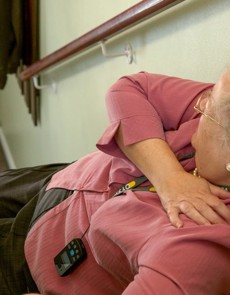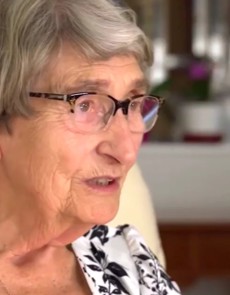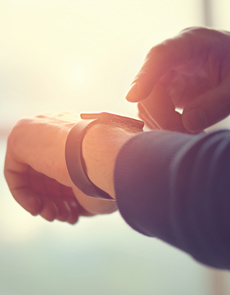Wearable Technology for Autism
Scientific advances have provided us with wearable technology for autism, helping clinicians to recognise that there’s more to be gained by personalising care and understanding that conditions or ailments may have unique elements from person to person. The same can be said for people with Autistic Spectrum Disorder (ASD).
Thanks to better medical knowledge, autism is far more identifiable amongst children, meaning better support through the developmental years. There’s still much to be done though, and the biggest research breakthroughs are so recent that many millennials – people aged 30s to early 40s – are finally being diagnosed as autistic or with other neurodivergent conditions. This will provide answers they have been longing for, but also will open them up to the reality that perhaps they need more support in managing day-to-day life and their wellbeing. This is where wearable devices come in as assistive technology.
In this article we will define autism and touch upon some of the surrounding context, before exploring wearable technology for autism. We will showcase autism wearables and provide a ‘best of’ list of impactful technologies or gadgets; all in the hope of helping improve the quality of life for someone with ASD or assisting loved ones and carers working with autistic individuals.
What is Autistic Spectrum Disorder (ASD)?

There are neurotypical people and neurodivergent people; the common way of thinking and behaving when presented with situations or uncommon ways. Autism is one of several neurodivergent conditions. In its simplest terms it is a difference in the wiring of the brain and how it processes things. It can impact communication skills, emotional development, as well as tolerance to stress. Overstimulation from noise, lights, and touch is very common for all neurodivergent people, for example.
Autistic Spectrum Disorder (ASD) is the full and preferred name for autism. This is important, because many people typecast autism and autistic people: to them they are non-verbal, prone to irrational or emotional behaviour, highly intelligent in specific or niche skills or areas of knowledge, and a dozen other stereotypes.
The reality is far different. Autism is a spectrum, like many other aspects of neurodivergency such as ADHD and OCD. There’s a myriad of behavioural commonality, there’s variance between age and sex, and some people are really good at masking – aka fake it ‘til you make it.
There are people who are worried by this increase and the connections to vaccines (debunked science – as explained by TIME Magazine), and there are people who think it’s attention-seeking from the ‘TikTok generation’. The reality is that it all boils down to evidence. We’re better educated and informed than ever before thanks to the internet. For example, there’s less crime than ever before, and yet it’s constantly reported to the extent that people often think it’s rampant. Historically though the same logic applies to when schools stopped punishing left handed children and we had a rise in the number of left handed people. Now we’re seeing it with transgenderism and neurodivergency. Things that weren’t accurately reported previously are now being properly accounted for, and it’s that awareness that has people uncertain or even uncomfortable.
That’s their problem though. The good news is that the medical world has finally caught up to the reality that there are lots of people with ASD – people who need help and support – and with that knowledge we can begin to tailor care to their needs.
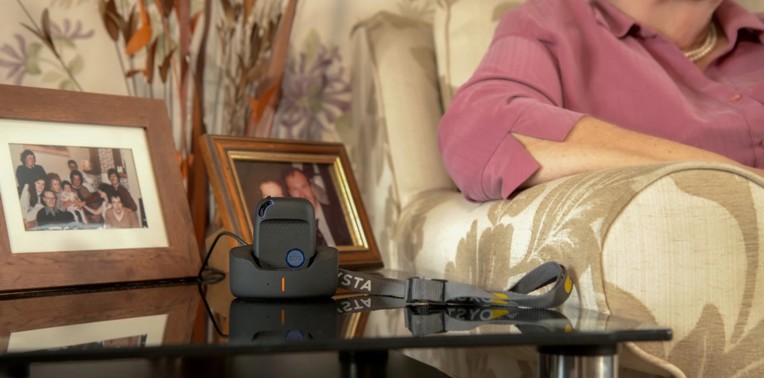
Wearable technology for autism – The market today
There’s no such thing as an autism monitoring device, but that doesn’t mean there isn’t an autism wearable device out there that can help people on the ASD spectrum manage their condition.
Modern technology is impacting all aspects of society, and health and care are both slowly but surely seeing the benefits. Some of this comes through primary care, but plenty of offerings can be defined as assistive technology: personalised tech to provide functionality that a person might otherwise struggle with. Assistive technology is fantastic because it promotes independence, which in turn reduces issues with mental health and low confidence, low motivation, and even depression.
AutismSpeaks has a very good article on how technology can help, but their focus is a broader look at technology and engaging with people who have ASD, whereas we want to explore wearables specifically to see what’s available on the market today to potentially improve quality of life.
The usual wearables for health and wellbeing are things such as:
- Wristbands or watches
- Armbands
- Headbands
- Earbuds or headphones
- Glasses
- Sports vest
There are important things to consider about those experiencing Autistic Spectrum Disorder though. Age matters, which can make some wearables unsuitable if a person is too young or too old to reliably utilise the wearable. Similarly, the severity of their ASD might make some devices unsuitable.
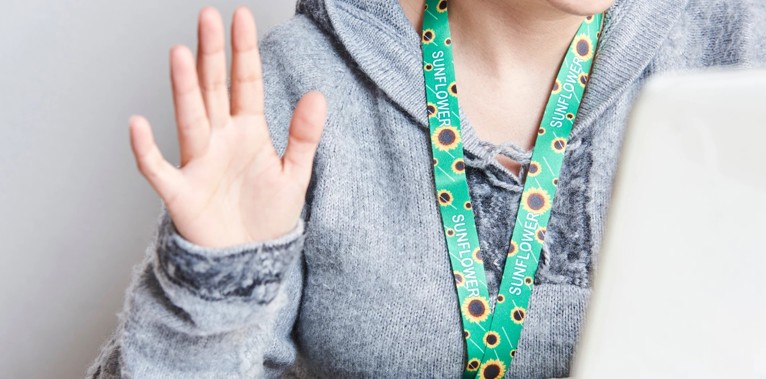
Not that only the more intense cases of autism have to be catered for. The typical life of autistic people is about emotional regulation in a world that doesn’t quite make sense at first look. This leads to overstimulation – a common trait in neurodivergent people in general – and is what wearable technology for autism seeks to address. The wristbands and watches, for example, can help with monitoring blood pressure, heart rate, and pulse, to try and alert a user to the fact their vitals are changing in response to stress and they may experience an outburst or distress.
Autism wearables have been the subject of many scientific investigations, and will continue to be studied in the years ahead, but one of the biggest findings has been a self-assessment performed by Williams and Gilbert (2020). The study, available here on journal archive Springer Link, "found that 90% of identified studies viewed Autistic traits as deficits to be ‘fixed’ and only 10% of technologies focused on supporting sensory regulation, emotion regulation, executive function or communication. This suggests that many wearable technology studies have been based on outdated theoretical models of Autism (i.e., a disorder to be treated)."
In effect, this says that the majority of the previous research into wearable technology for autism is flawed. That might seem a damning indictment on the surface but it’s an important honest admission to help improve future research. People with Autistic Spectrum Disorder want support, and now that we know the research was improperly orchestrated we can encourage a greater inclusion and consultation of those experiencing autism. Their testimony is crucial to tailoring wearable technology to be the best it can be.
Autism wearables – Our Top 10
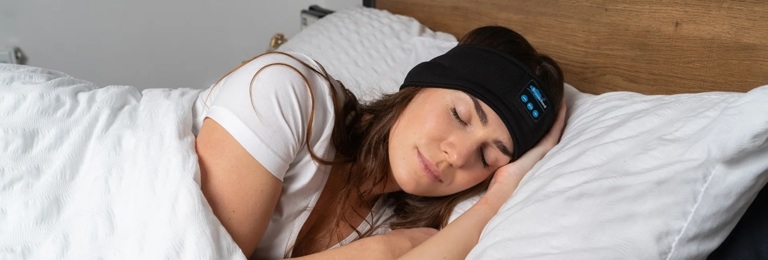
Photograph courtesy of SnoozeBand™
We have collated a list of some of the most appropriate wearable technology for autism. Some of these suggested products or solutions are designed specifically for those people with ASD, whilst some are more agnostic or generalised health and care devices that conveniently meet the needs of autistic people. The following recommendations appear in no particular order.
1. AngelSense
The AngelSense device is a clip-on GPS tracker, designed to be worn on clothing. It is a safety net for old or young people, to support independent living, build confidence, and reduce stress, frustration, or depression.
Aside from location tracking, it can also provide smart alerts if the user deviates from typical or expected routes or times of activity. There is a speakerphone for two-way communication, and an SOS button in the event of emergencies.
2. Oysta Rio
The Oysta Rio is a small, lightweight gadget designed to indicate a user’s location, handle two-way calls, report a fall, and send out an emergency SOS signal leading help to the user. Like the AngelSense, the Oysta Rio works with our IntelliCare software to capture and transmit user data back for analysis, in order to build up a pattern of behaviour to help guardians, carers or healthcare professionals spot anomalies and unusual behaviour – signs that a person needs help.
For more information, read our page on technology enabled care.
3. Dreem
Dreem boasts a headband designed to capture biofeedback (electrical signals) during sleep. This might seem an unusual wearable for anyone, let alone those with Autistic Spectrum Disorder, but difficulty getting to sleep and staying asleep is quite common amongst neurodivergent people.
Devices like the Dreem headband are a way forward in building up a more accurate picture of how the brain is behaving as a user goes through the sleep cycle – potentially providing insights that will allow for better sleep hygiene aka habits to encourage easier sleep and a better quality of rest in order to allow better management of ASD and other similar conditions.
4. EmbracePlus
The EmbracePlus smartwatch pitches itself as providing continual health monitoring. It can provide blood oxygen readings, pulse, heart rate, skin temperature, and also features an accelerometer and gyroscope to track movement.
Like the Dreem headband, the idea is to let data do the work and build up patterns and trends that correlate with a user’s sense of wellbeing. The aim is that deviation from the norm will correlate with feeling more tired, more stressed, or any other health concerns – physical or mental. In this case it could help an autistic person avoid overstimulation and even meltdown by informing them of their own limits before they reach and test them.
5. The Brainwave Watch
This wearable is designed for special needs children, and is suitable for younger people with more severe cases of ASD. It gives a child distance from parents or guardians and an independence to report back that they are okay.
The watch itself transmits a GPS signal for the wearer’s location, as well as monitoring the person’s heart rate. It can send SOS signals and allow voice calls, and due to the target audience it has a secure clasp to deter removal.
6. The Autism Glass Project
This wearable is perhaps the most exciting of the bunch. Based on the Google glasses, the SuperpowerGlass is a somewhat similar headpiece labelled a wearable behavioural aid.
Stanford University have developed the glasses to operate using machine learning and artificial intelligence, which then recognise facial expressions and indicate what the user is seeing through short cues such as ‘happy’, ‘sad’ or ‘angry’.
This may not be appropriate for many people with ASD, as the spectrum nature of the condition means that most people with autism can recognise emotions and body language, but in those cases where a person struggles to understand this can avoid the person avoiding social interaction out of fear.
7. Loop Earplugs
Perhaps the simplest autism wearable on the list, Loop Earplugs are a brand that offers tailored earplugs for different needs. Their ‘Quiet’ model is designed to dampen the sound of the world around you. Given that sound is one of the contributing factors towards overstimulation in neurodivergent people, ‘Loops’ have rapidly grown in popularity as a discreet solution that functions as both headphones and as soundproofing against the hustle and bustle of daily life.
8. SnoozeBand
SnoozeBand technically offer two solutions: the headband and the eye mask. Both function in the same way, and are designed to be a comfortable Bluetooth headset for those who need sound to ease them to sleep.
This is a different approach to the Dreem headset; tackling the immediate issue of relaxing a person so they can sleep rather than digging deeper into why sleep might be difficult.
9. Apple Airtag
Another simple product with an agnostic purpose, the Apple Airtag is a simple and small solution designed to track an item with an Airtag stuck to it. It works by communicating through Bluetooth to any nearby iPhone, which then reports back to the Find My application in the Apple Store.
The main restriction is that they specifically require usage with an Apple device, but similar products are available that can work with Android devices. The big benefit is that this is another discreet wearable that can be put into the clothing or belongings of a person with ASD – especially younger people and children.
10. Touchpoint
Our final recommendation is another wristband: the Touchpoint Calm. This is meant to operate similar to how fidget spinners might; a distraction technique to provide a simple activity or sensation to focus on. In this case, the Touchpoint bracelet uses haptic (touch) technology to deliver micro vibrations as a distraction to the sympathetic nervous system and to stall or abort stress.
This concludes our guide to wearable technology for autism. While the market for autism wearables is still in its infancy, we hope the above listings have given you some valuable insight into the variety of devices and gadgets available in the healthcare market to help improve the quality of life for those living with Autistic Spectrum Disorder.


 AU & NZ
AU & NZ
 SG
SG
 MY
MY
 US
US
 IE
IE

